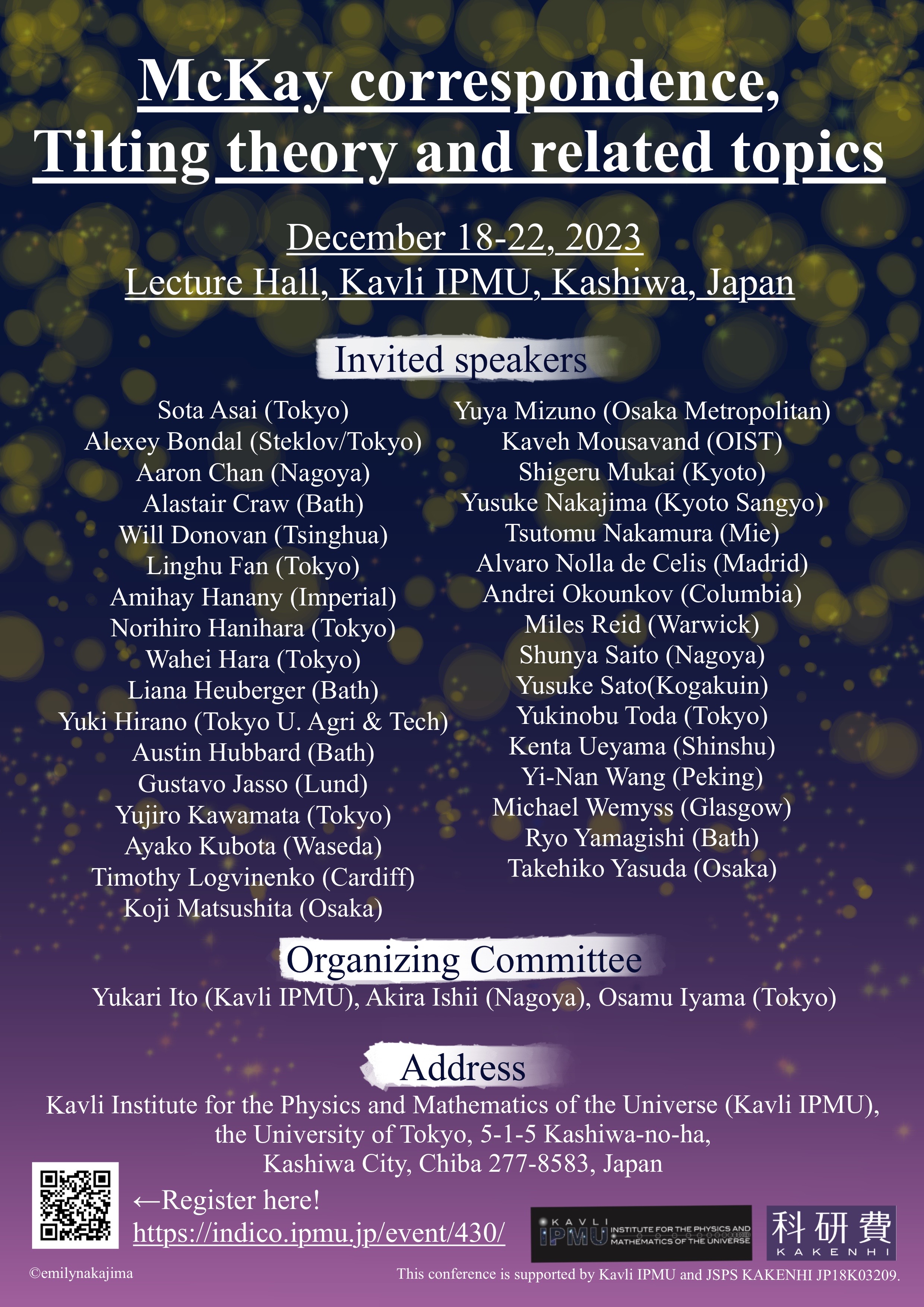McKay correspondence, Tilting theory and related topics
Lecture Hall
Kavli IPMU, Kashiwa, Japan
Dates: December 18-22, 2023
Venue: Lecture Hall, Kavli IPMU, Kashiwa, Japan
Overview: The McKay correspondence, discovered in the 1980s, has been widely studied in various directions including higher dimensional generalizations, the derived category version, connections to mathematical physics, and so on. Tilting theory, discovered in the 1980s in quiver representations, is a basic tool to control equivalences of the derived categories, and one of the applications is the derived McKay correspondence. We will share recent progress of the McKay correspondence and Tilting theory, and consider new problems and related topics. One of the main topics is Yamagishi's proof of Craw-Ishii conjecture, which asserts that every projective crepant resolution in dimension three is a moduli space for appropriate choice of stability condition. Another one is recent developments of Tilting theory, using stability conditions, the wall-chamber structure in the Grothendieck groups, singularity categories, cluster categories, etc..
Invited speakers: 
Sota Asai (Tokyo)
Alexey Bondal (Steklov/Tokyo)
Aaron Chan (Nagoya)
Alastair Craw (Bath)
Will Donovan (Tsinghua)
Linghu Fan (Tokyo)
Amihay Hanany (Imperial)
Norihiro Hanihara (Tokyo)
Wahei Hara (Tokyo)
Liana Heuberger (Bath)
Yuki Hirano (Tokyo U. Agri & Tech)
Austin Hubbard (Bath)
Gustavo Jasso (Lund)
Yujiro Kawamata (Tokyo)
Ayako Kubota (Waseda)
Timothy Logvinenko (Cardiff)
Koji Matsushita (Osaka)
Yuya Mizuno (Osaka Metropolitan)
Kaveh Mousavand (OIST)
Shigeru Mukai (Kyoto)
Yusuke Nakajima (Kyoto Sangyo)
Tsutomu Nakamura (Mie)
Alvaro Nolla de Celis (Madrid)
Andrei Okounkov (Columbia)
Miles Reid (Warwick)
Shunya Saito (Nagoya)
Yusuke Sato(Kogakuin)
Yukinobu Toda (Tokyo)
Kenta Ueyama (Shinshu)
Yi-Nan Wang (Peking)
Michael Wemyss (Glasgow)
Ryo Yamagishi (Bath)
Takehiko Yasuda (Osaka)
Organizing Committee:
- Acknowlegments
- This conference is supported by Kavli IPMU and JSPS KAKENHI Grant numbers JP18K03209.
Address:
Kavli Institute for the Physics and Mathematics of the Universe (Kavli IPMU),
the University of Tokyo, 5-1-5 Kashiwa-no-ha, Kashiwa City, Chiba 277-8583, Japan
